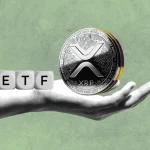Tether (USDT) is heavily used for crypto transactions as the largest stablecoin whose value is pegged to the dollar. However, failure to comply with Europe’s Markets in Crypto-Assets (MiCA) regulations puts serious pressure on Tether.
Europe and Tether
According to MiCA standards, stablecoins such as Tether must obtain an electronic money license to be traded on crypto exchanges. USDT is at risk of being banned in Europe because it cannot obtain this license within the specified period. This may cause USDT to be delisted from many crypto exchanges on December 30, 2024.
Tether, Bitcoin $96,653.7 and Ethereum  $3,417.6It is the third largest cryptocurrency after , with a market capitalization of $139.28 billion. News of the ban could weaken Tether’s market position and lead to liquidity problems. This could lead to a decrease in investors’ confidence and a collapse in the crypto market.
$3,417.6It is the third largest cryptocurrency after , with a market capitalization of $139.28 billion. News of the ban could weaken Tether’s market position and lead to liquidity problems. This could lead to a decrease in investors’ confidence and a collapse in the crypto market.
Expert Opinions
Financial analyst Jason stated that Tether is a “bomb” for the market. He thinks that Tether has not produced new units for two weeks and that there will be serious problems with the bans.
“Tether is like a bomb ready to explode and carries the risk of exploding with bans.”
Tether CEO, on the other hand, maintains his positive stance against the crypto crisis and describes the negative news as a positive signal for his tokens.
Investors in Europe will be deprived of the advantages offered by the largest stablecoin with the ban of Tether. Crypto exchanges may experience liquidity problems, which may also affect global crypto markets. But major stablecoins like USDC are licensed in the region. Moreover, USDC has a presence in many networks. Banning or delisting USDT would not cause a massive liquidity problem for a few reasons, and this FUD could be paving the way for a new buying opportunity.
- Tether’s reserves consist entirely of assets that can be easily converted into cash, and even if all USDT is sent for redemption, this can be done successfully. Moreover, the company’s reserve cash volume is over 100%.
- Licensed alternatives such as USDC can easily meet the needs of US exchanges that do not generate huge volumes.
- With Hadron, Tether has already received a license for payment services, and it is possible that USDT will also escape the ban in the future.
- The removal of USDT from exchanges does not include global exchanges. Those who only use global exchanges in Europe may not be able to access USDT, but this does not mean a huge volume. We know from institutional flow data that there is no huge demand for cryptocurrencies in the EU region. If the ban were for the US this could be a real problem. But the EU has extremely limited influence.
In light of these developments, short-term fluctuations are expected in crypto markets. Tether’s decline in market dominance may bring limited growth support to alternative stablecoins.
Disclaimer: The information contained in this article does not constitute investment advice. Investors should be aware that crypto currencies carry high volatility and therefore risk, and should carry out their transactions in line with their own research.








